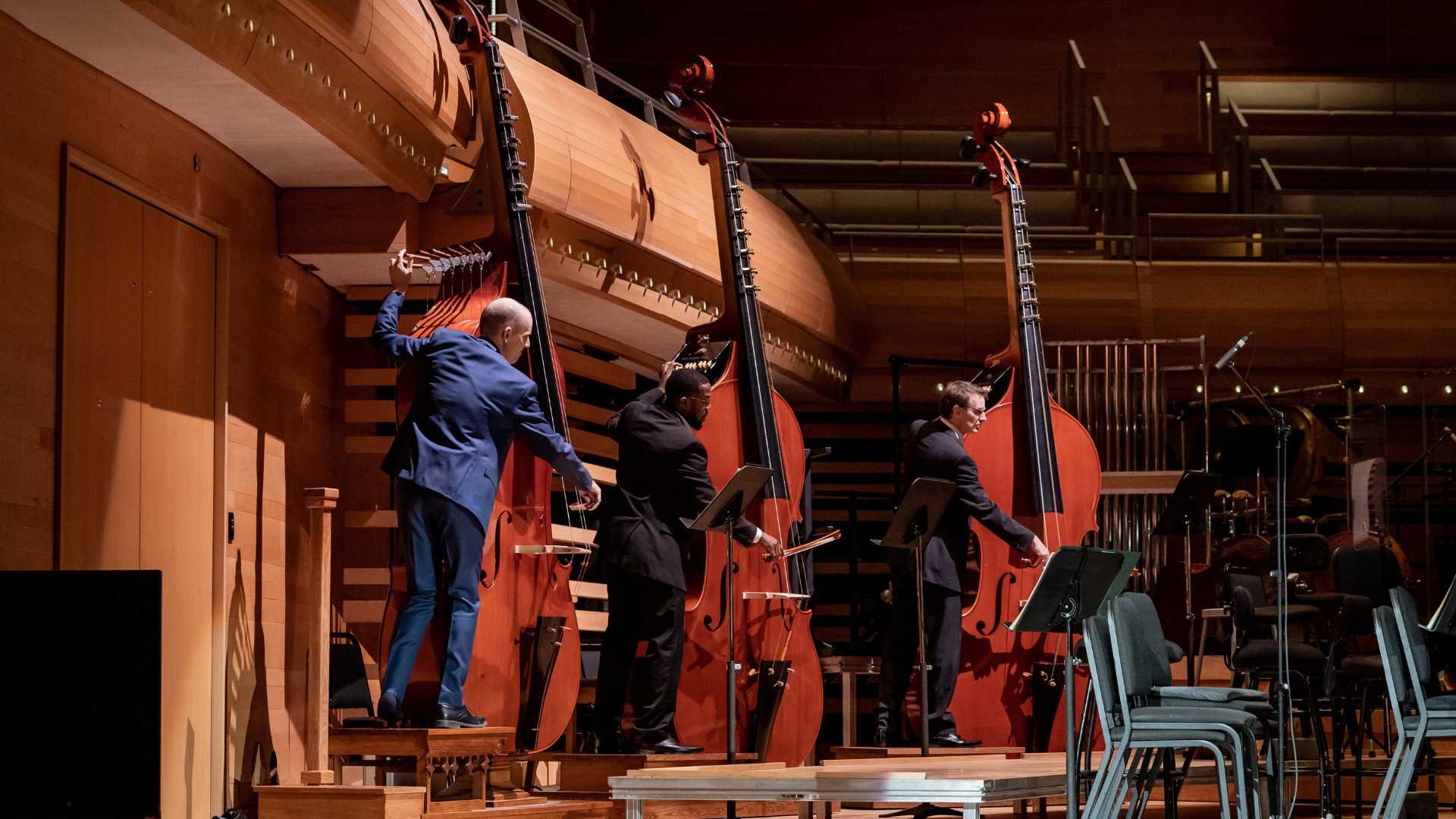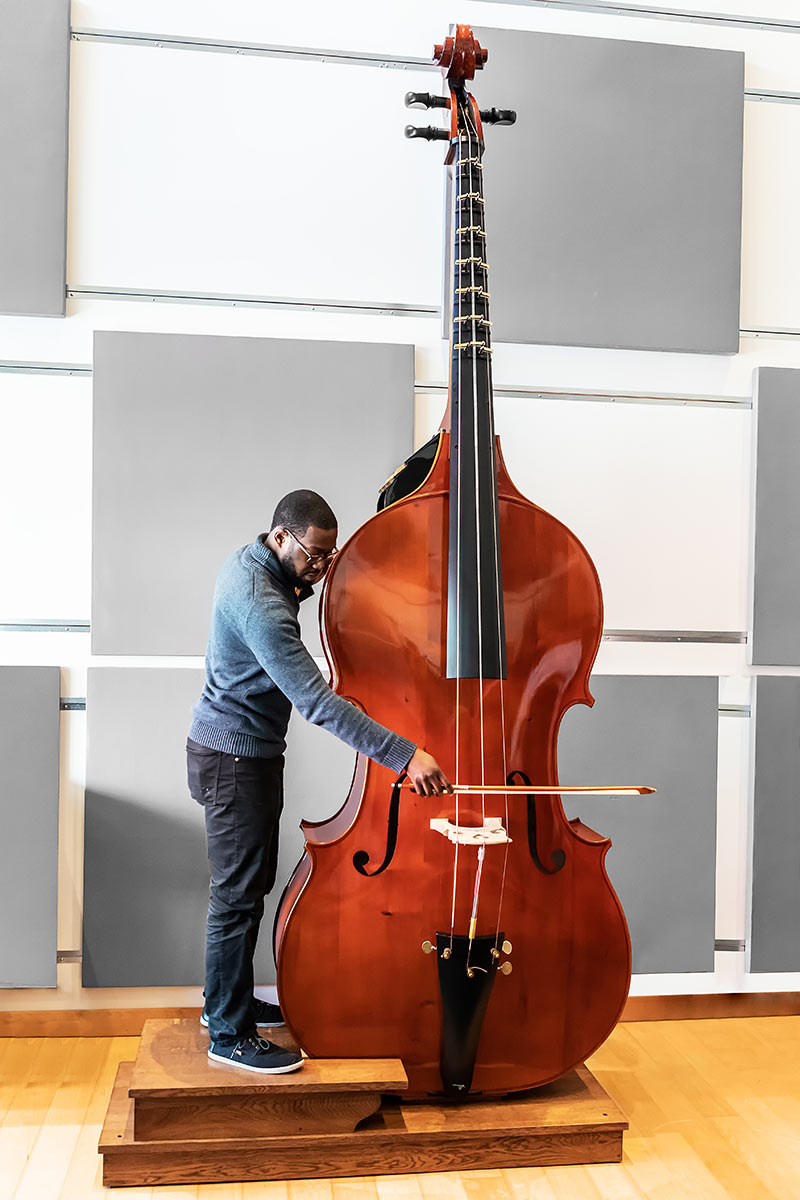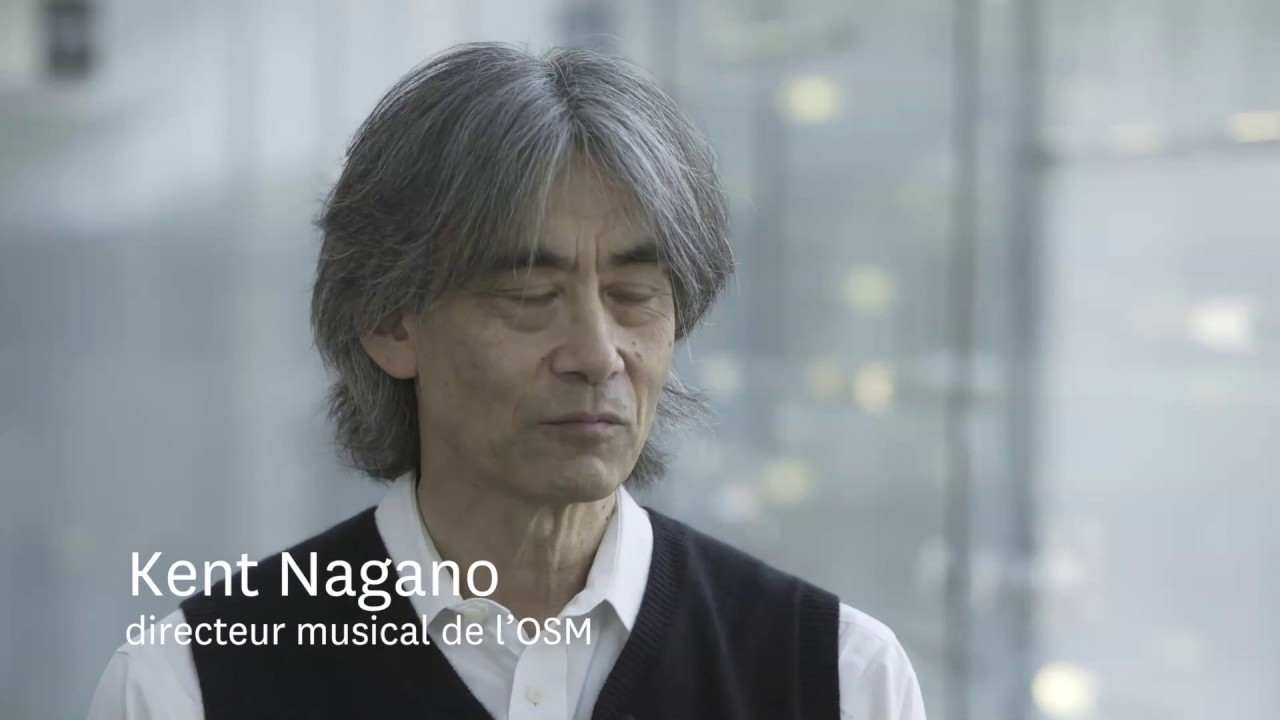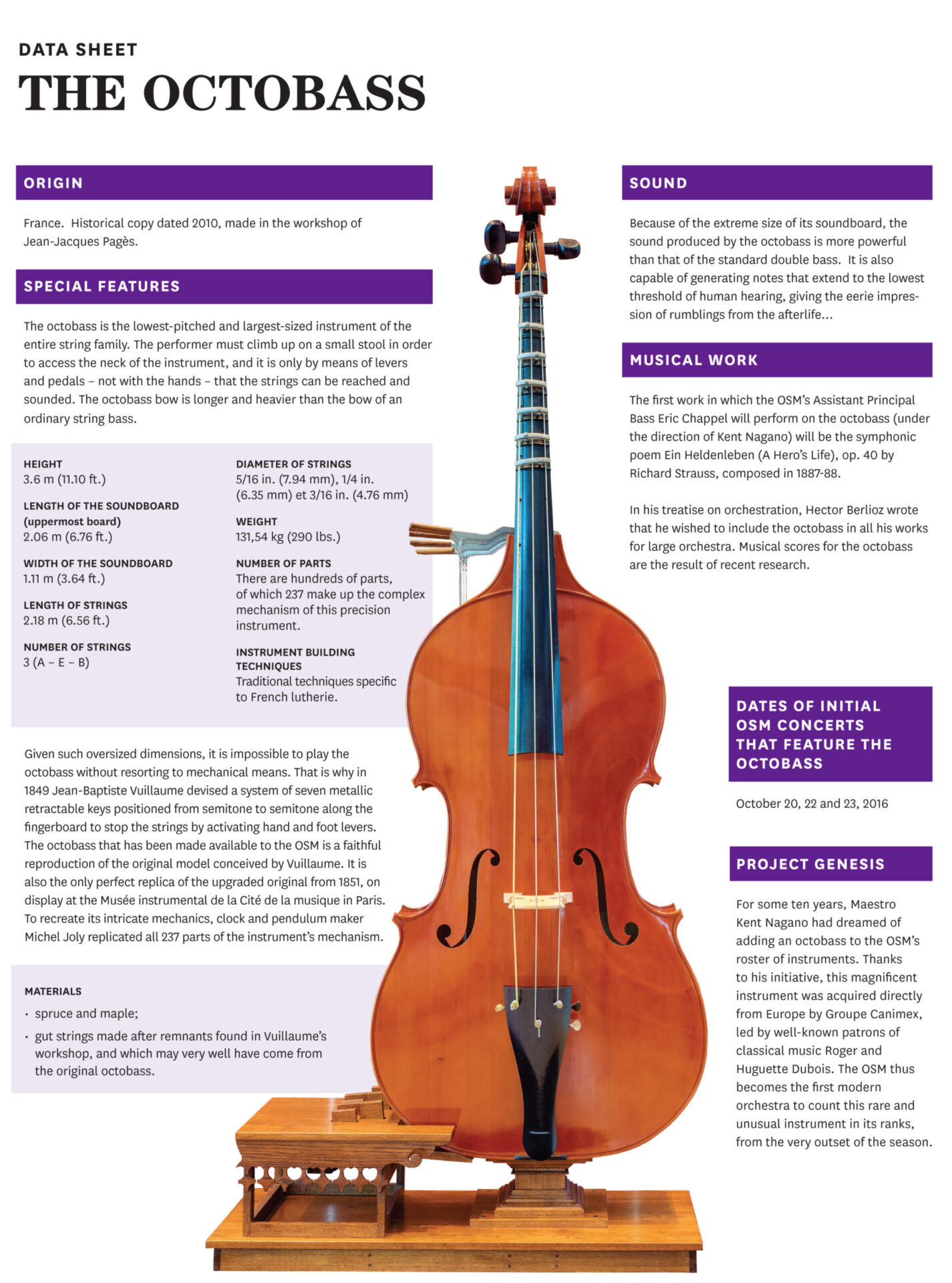The octobass prototype was built by a certain Mr. Dubois in 1834, before the luthier Jean-Baptiste Vuillaume (1798–1875) improved upon it in 1849. Two years later, Vuillaume exhibited not one, but three exemplars of the instrument at the London World Fair. Of these, only one remains and is preserved today at the Cité de la musique in Paris, where visitors can marvel at its appearance and sound. An audio headset enables visitors to hear the octobass, though actually, the sample is taken from an OSM recording made internally.
French luthier Jean-Jacques Pagès built his first octobass following Vuillaume’s model. But what moved him to replicate the colossal instrument? One day, visiting the Cité de la musique with his class to view this 19th-century instrument, as the students stood in awe at its towering presence he declared, having just finished building a piccolo: “It is no more complicated than a piccolo, it only requires more wood!” After a year of labour, the first octobass of the 21st century was completed.
The First Octobass Within an Orchestra
Soon after his appointment as Music Director of the OSM, Kent Nagano asked to meet with Huguette and Roger Dubois, enthusiastic patrons of the arts and instigators of the Canimex Group. “Are you familiar with the octobass?” Mr. Nagano asked Mr. Dubois. He admitted at never having heard of the instrument, though the late Ms. Dubois had enjoyed seeing it in Paris.
It was Kent Nagano’s long-held dream to equip the OSM with an octobass, to fill a then-vacant range of low frequencies that only the lowest-sounding pipes of the Grand Orgue Pierre-Béique could supply. To give an idea of the depth of sound sought: while the A to which the Orchestra tunes vibrates, as you may recall, at a frequency of 442 Hz, the lowest note of the octabass does so at roughly 25 Hz, the limit of what the human ear is capable of perceiving.
Mr. Dubois was quickly apprised of Jean-Jacques Pagès and his octobass, and that sufficed for this benefactor to finance the purchase of the instrument. Its first performance with the OSM occurred on October 20, 2016.
From Solo to Trio
Encouraged by enthusiastic public response to the instrument, Kent Nagano convinced Roger Dubois to finance the commission of two more octobasses by Mr. Pagès. The luthier accepted, dedicating two and a half years to the design of a more modern instrument whose playing would prove more comfortable. The result of this labour is that each new octobass is equipped with a small keyboard wedged into a curve in the instrument, with keys that set their corresponding dampers, mounted above the strings, in motion. These dampers are activated by tiny motors, allowing the musician to stop the strings in the right places and obtain the desired notes with considerably greater ease than the original model, which is operated with levers and pedals.
Roger Dubois wished to witness the assembly of the octobasses he so generously loaned to the OSM, and to hear their first notes. He believes that the instruments will help confirm the Orchestre symphonique de Montréal’s status as an international leader in orchestral performance, and that these octobasses—which can be taken on tour—will be the envy of many! “In a way, these octobasses are liable to become the OSM’s trademark,” he maintains. His pride in this achievement is evidenced by a bronze sculpture being prepared for installation in front of Canimex headquarters in Drummondville, Quebec, and which will depict Eric Chappell dancing with two octobasses.




